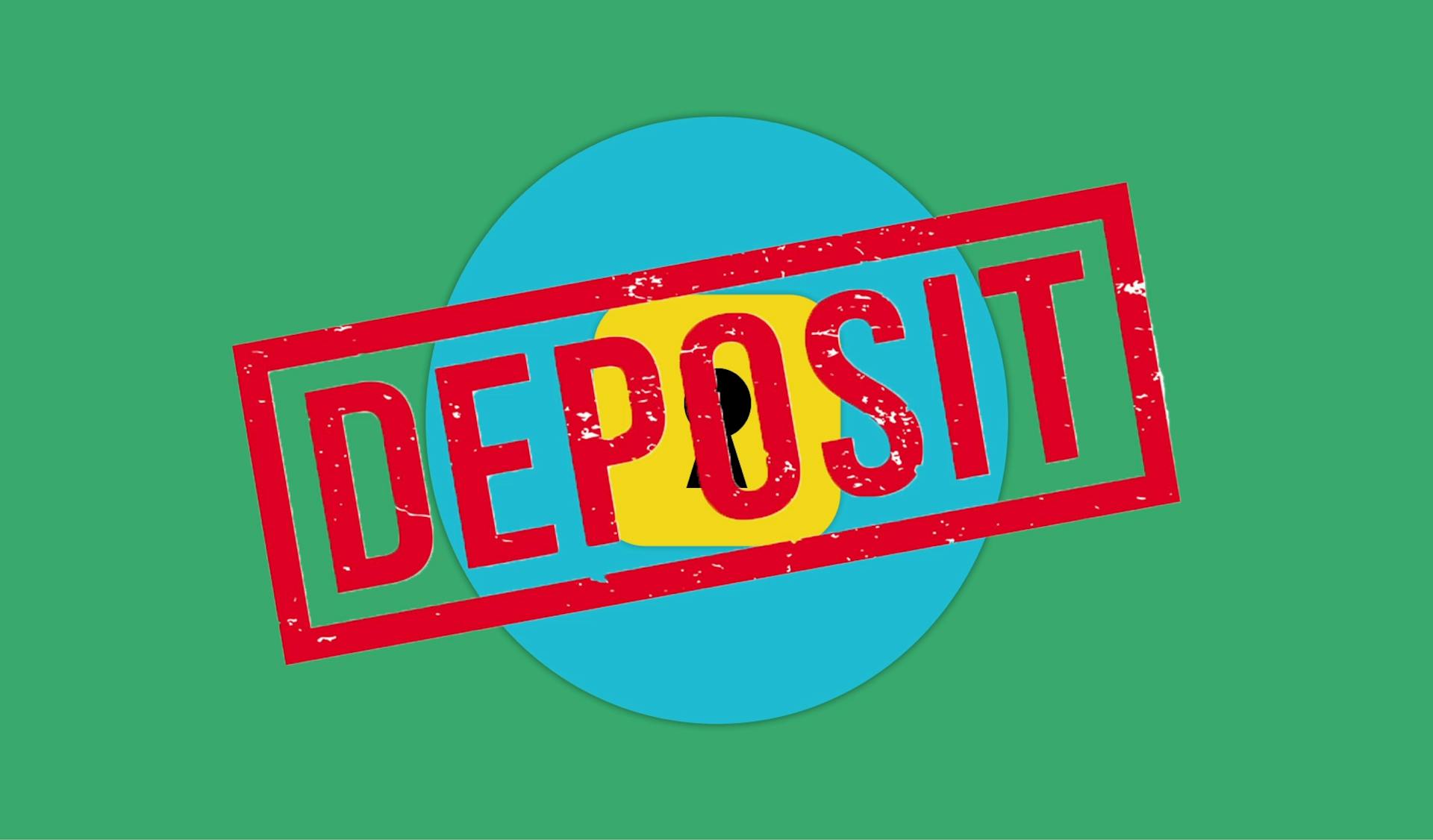
Loan officers are often thought of as middlemen between lenders and borrowers, but their compensation can be a bit more complex than that. Loan officers are paid by the lender, not the borrower.
The payment structure for loan officers can vary, but it's often based on the size of the loan and the interest rate. For example, on a $200,000 mortgage, the loan officer might earn a flat fee of $2,000, plus a percentage of the loan amount.
This payment structure can be beneficial for borrowers, as it incentivizes loan officers to find the best loan options for them. Loan officers have a direct financial stake in the loan's success, which can lead to better customer service and more competitive rates.
If this caught your attention, see: Chase Loan Officers Salary
How Loan Officers Get Paid
Loan officers can be paid in various ways, but most receive a combination of salary and bonuses. Their income may also be based on commission, which can vary greatly depending on the type of loan and the loan officer's level of involvement.
The median pay for loan officers in 2015 was $63,430 per year, according to the US Bureau of Labor Statistics. The lowest ten percent earned less than $32,870, and the highest ten percent earned more than $130,630.
Loan officers can be paid entirely on commission, or through a combination of salary and bonuses. Some may receive a flat salary, but most are paid on commission. A loan officer's commission can range from 20% to 80% of the brokerage office's commission, depending on the commission agreement and their level of involvement in the transaction.
A mortgage broker working from a 1% commission structure on a $500,000 loan can earn a $5,000 commission. The loan officer will receive a negotiated percentage of that commission, which can range from 20% to 80%.
Loan officers can also be paid a base salary and a small bonus. For example, a loan officer who completes a mortgage loan for $500,000 may receive a bonus of $1,500. A smaller loan of $200,000 might earn the loan officer a $600 bonus.
The compensation model can vary depending on who the loan officer works for and whether they are a broker or a direct employee of a mortgage lender. Some loan officers may be paid on the front end of the borrowing process, where the borrower is charged fees that are given to the loan officer. Others may be paid on the back end, where the lender funding the loan pays the commission.
Expand your knowledge: Proven Plan for Success for Loan Officers
Here are some common pay models:
- Salary and bonuses (or incentives)
- Salary and commission
- Entirely on commission
The lender or borrower pays the commission, but not both. Federal Regulation Z of the 2010 Dodd-Frank Act requires mortgage providers to provide borrowers with written disclosure of important credit terms, including how much their loan will cost.
How Companies Profit from Lending
Mortgage lenders make money from various sources, including origination fees, yield spread premiums, discount points, closing costs, mortgage-backed securities, and loan servicing. These fees can add up quickly, with a typical origination fee being one percent of the loan balance, which can come to thousands of dollars.
Lenders also earn income from interest charged on loans, as well as income from servicing the mortgage. In fact, the Mortgage Bankers Association reported that the average lender profit per loan rose to $1,686 in the second quarter of 2016, after decreasing due to increased regulation and costs.
The lender's profits ultimately come from the borrower, but the loan officer's commission is typically paid from the lender's profits. This means that the loan officer's income is directly tied to the lender's ability to make money on the loan.
You might like: Can You Get a Mortgage with Student Loans
Here are some ways lenders make money from a loan:
- Loan origination fees
- Income from interest charged
- Income from servicing the mortgage
- Proceeds earned from a secondary mortgage market sale
The yield spread premium is another way lenders make money, by charging a higher interest rate to borrowers than they pay to depositors or larger banks. For example, if a lender borrows funds at 4% interest and extends a mortgage at 6% interest, they earn 2% in interest on the loan.
Loan Officer Compensation
Loan officers can earn their income through a combination of salary and bonuses, or entirely on commission. The size of the commission is often based on how the lending company was introduced to the borrower.
In some cases, loan officers are paid a flat salary, but most are paid on commission. For example, a mortgage broker working from a 1% commission structure can earn a $4,000 commission on a $500,000 loan, depending on the commission agreement.
Loan officer compensation varies widely, with the lowest ten percent earning less than $32,870 and the highest ten percent earning more than $130,630 per year.
Here's a breakdown of the different pay models:
- Salary and bonuses (or incentives)
- Salary and commission
- Entirely on commission
Loan officers can be paid at the beginning or the end of the borrowing process, referred to as "on the front" or "on the back" of the loan.
When Are Officers Paid
Mortgage loan officers can be paid at the beginning or the end of the borrowing process, known as "on the front" or "on the back" of the loan.
On the front, the borrower is charged fees, such as a settlement fee, and that money is given to the loan officer. The borrower might pay these fees with their own money or have them rolled into the loan.
Loan officers who get paid on the back end of a transaction may market their services with a phrase like "no out-of-pocket fees." This means the borrower doesn't have to pay the fees directly.
The lending industry and the fees you pay are highly regulated. Federal Regulation Z of the 2010 Dodd-Frank Act requires mortgage providers to provide borrowers with written disclosure of important credit terms, such as how much their loan will cost.
A loan officer can either be paid by the lender or the borrower, but not both. This is a key point to consider when working with a loan officer.
You might enjoy: How Are Home Equity Loans Paid Back
Servicing
Servicing is a crucial aspect of the mortgage industry, and it's a way for lenders to continue earning revenue even after selling mortgage-backed securities.
Lenders can earn revenue by servicing loans in mortgage-backed securities they sell. They may charge a small percentage of the mortgage value or a predetermined fee for handling administrative tasks.
The lender may perform tasks such as processing mortgage payments and handling administrative tasks involved with loan servicing. This can be a lucrative opportunity for lenders, especially if the MBS purchasers are unable to handle these tasks themselves.
Officer Compensation
Loan officers can earn their income through a combination of salary and bonuses, or entirely on commission. The type of pay model used depends on who they work for and whether they are a broker or a direct employee of a mortgage lender.
A loan officer who is paid on commission typically earns a percentage of the loan amount, with the size of the commission based on how the lending company was introduced to the borrower. For example, if a mortgage company provides the lead, the percentage of the commission is typically smaller.
Loan officers can be paid at the beginning or the end of the borrowing process, referred to as "on the front" or "on the back" of the loan. On the front, the borrower is charged fees, such as a settlement fee, and that money is given to the loan officer.
The average annual salary for a loan officer is $79,825, according to the Consumer Financial Protection Bureau. However, income levels vary by location and experience.
Here's a breakdown of the different pay models used by loan officers:
Bonuses and commissions are often calculated using basis points (BPS), units of measurement that assess percentages in financial instruments, including interest rates. One basis point is equivalent to 1/100 of a percent.
In some cases, loan officers may receive a flat salary, but most are paid on commission. The range of commissions paid can vary, with some loan officers earning up to 80% of the commission, while others may earn as little as 20%.
Recommended read: Do Loan Officers Work from Home
Working for Free

Most mortgage loan professionals work on commission, which means they often spend hours working on loan scenarios for you without getting paid.
They don't usually get paid if you decide not to buy or refinance, or the application is denied, or you change lenders.
Working for free is a big part of this business, as they may not get compensated until the deal is finalized.
For another approach, see: How Do Actors Get Paid When Not Working?
Sources
- https://www.investopedia.com/articles/credit-loans-mortgages/090916/how-do-mortgage-lenders-get-paid-and-make-money.asp
- https://themortgagereports.com/23751/how-much-do-mortgage-lenders-make
- https://www.homelight.com/blog/buyer-how-do-loan-officers-get-paid/
- https://morganfinancial.net/decoding-mortgage-loan-officer-pay-cfpb-guidelines-compensation-home-loan/
- https://www.jvmlending.com/blog/how-mortgage-banks-get-paid/
Featured Images: pexels.com


